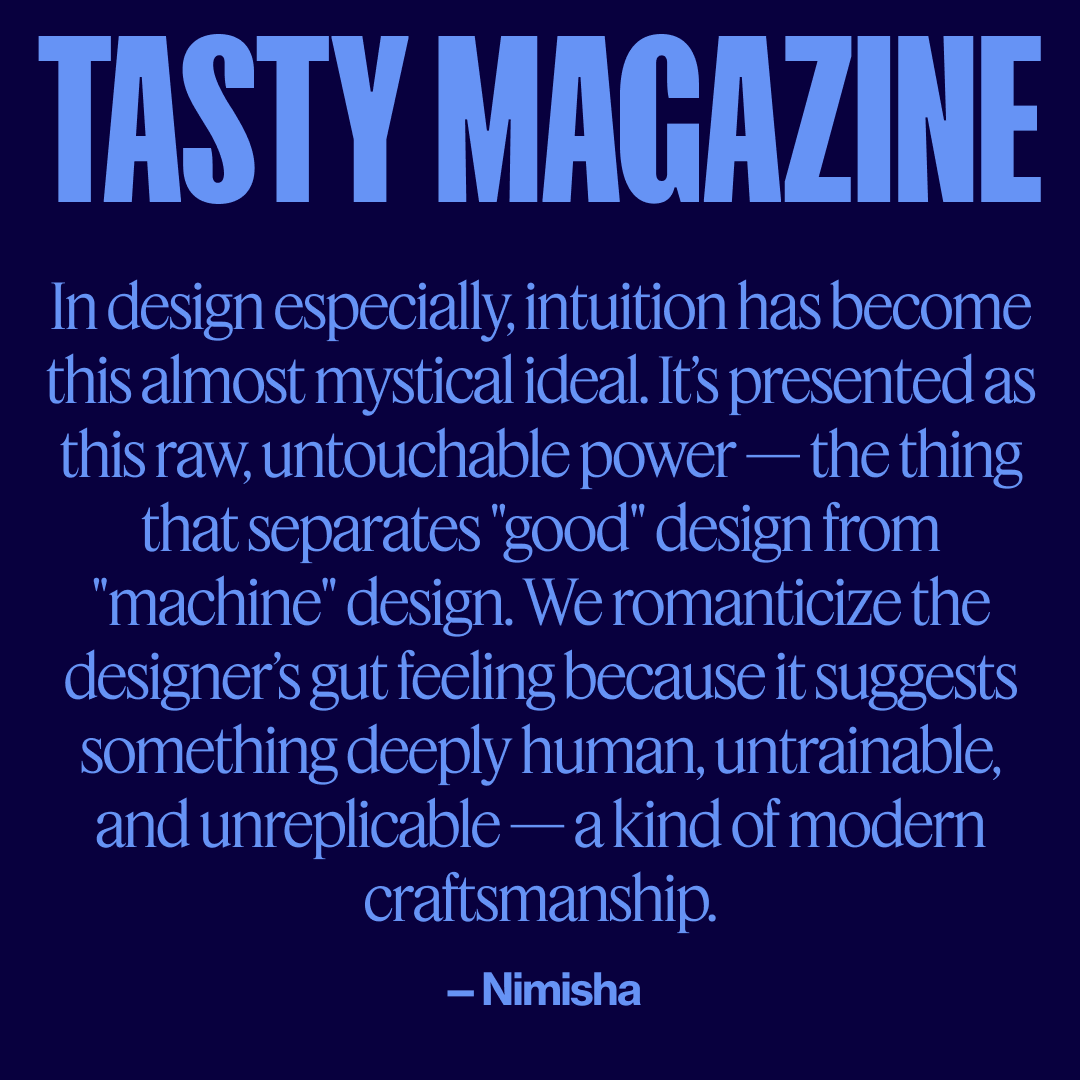TASTY THOUGHTS: Branding Isn’t Broken — But It’s Stuck in a Loop
Words by Nimisha | Minchki Studio
If the last wave of branding was defined by systems-thinking, the next one might be defined by something harder to grasp: instinct.
Over the past few years, we’ve watched brand identities become increasingly systematised. Not just scalable, but formulaic. Polished, consistent, and highly legible — but often missing a vital layer of personality. Of presence.
This isn’t a critique of systems. At Minchki, we believe good systems are essential. But they shouldn’t become the brand. Somewhere along the line, in the push to create frameworks that flex and scale, we’ve lost something else: the sense of a brand that feels alive.
It’s not that branding today is broken. It’s that it’s become a little too safe.
When Everything Aligns — and Nothing Resonates
It’s easy to see how we got here. As design teams scaled, globalised, and became more cross-disciplinary, branding had to become more structured. Clearer guidelines. More predictable outcomes. “Make it ownable, but also consistent.” “Push it, but keep it recognisable.”
The result? A wave of brand identities that are clean, clever, and strategically aligned — but emotionally flat.
These brands speak the right language, but say very little. They show up across touchpoints, but leave no real impression. They might tick every box in a creative brief, but they don’t stick in your mind.
In short, branding has become a performance of originality — rather than a practice of it.
The Rise of Blanding 2.0
We used to talk about “blanding” as a visual trend: minimalist logos, sans-serif typefaces, muted palettes. But what we’re seeing now goes deeper than aesthetics.
This is Blanding 2.0 — branding that’s overly engineered. Rational to a fault. Guided so tightly by metrics and best practices that it leaves no space for tension, personality, or surprise.
And ironically, this kind of branding is especially vulnerable in an AI-powered world. Because when branding becomes repeatable, it becomes replaceable.
Reclaiming Intuition as Creative Infrastructure
This is where we come back to intuition. A word often misused, occasionally mocked, and rarely taken seriously in strategic conversations.
But at Minchki, we see intuition as infrastructure. It’s not soft. It’s not vague. It’s a form of deeply trained perception — shaped by experience, culture, timing, and taste.
It’s the instinct to know when a design solution is too expected.
The ability to sense what a reference really means in its cultural context.
The clarity to make decisions that might not be obvious, but are unmistakably right.
True intuition is a product of attention. It’s observational pattern-making. And in an era of templated thinking, it might be the most valuable tool we have.
The best brands make us feel something…
At Minchki, we believe that brands need to be both understood and felt.
That means starting with strategic clarity — but also making space for emotion, edge, and instinct. It means building systems that work across platforms, but don’t erase the quirks, the textures, the human cues.
Emotional intelligence isn’t the opposite of creative rigour. It’s the next evolution of it.
If we want to build brands that resonate in culture — not just function in market — we need to design with more than logic. We need to bring our full selves to the table: our taste, our experiences, our perspectives.







